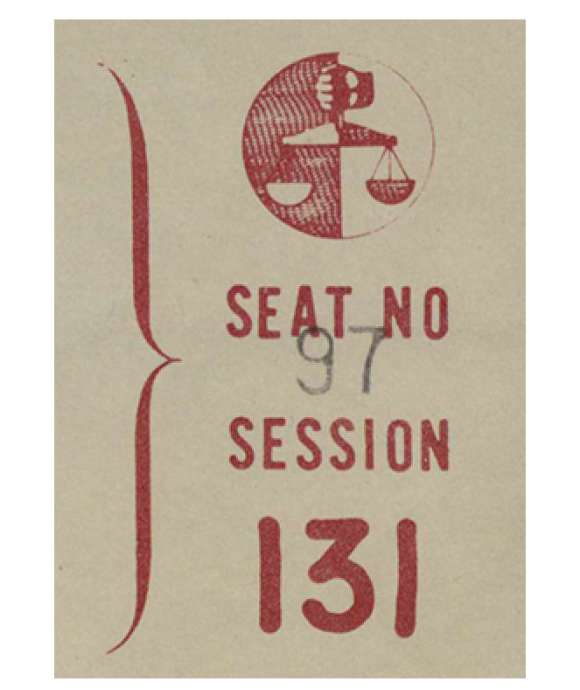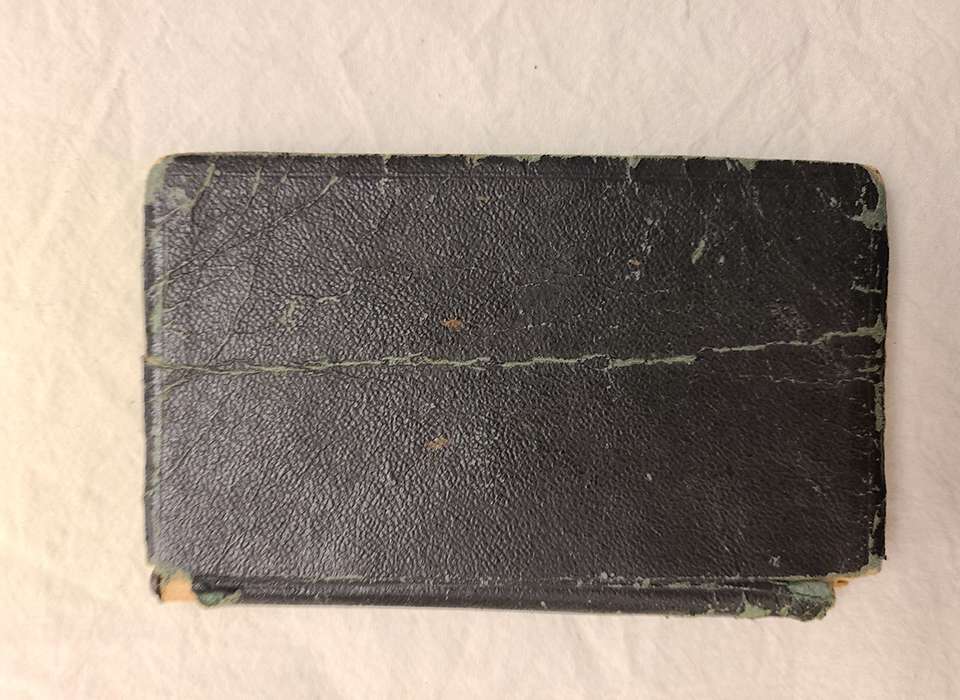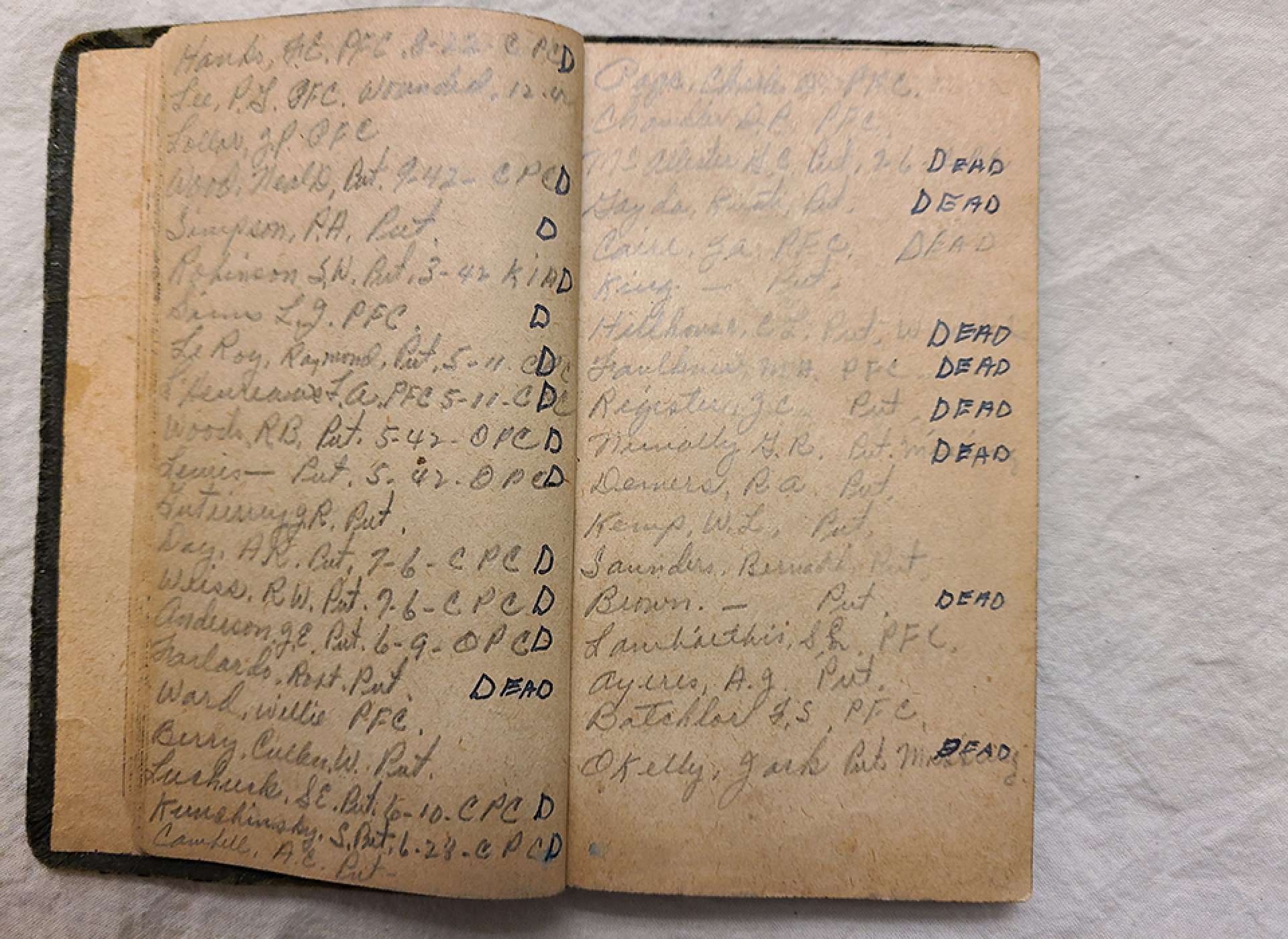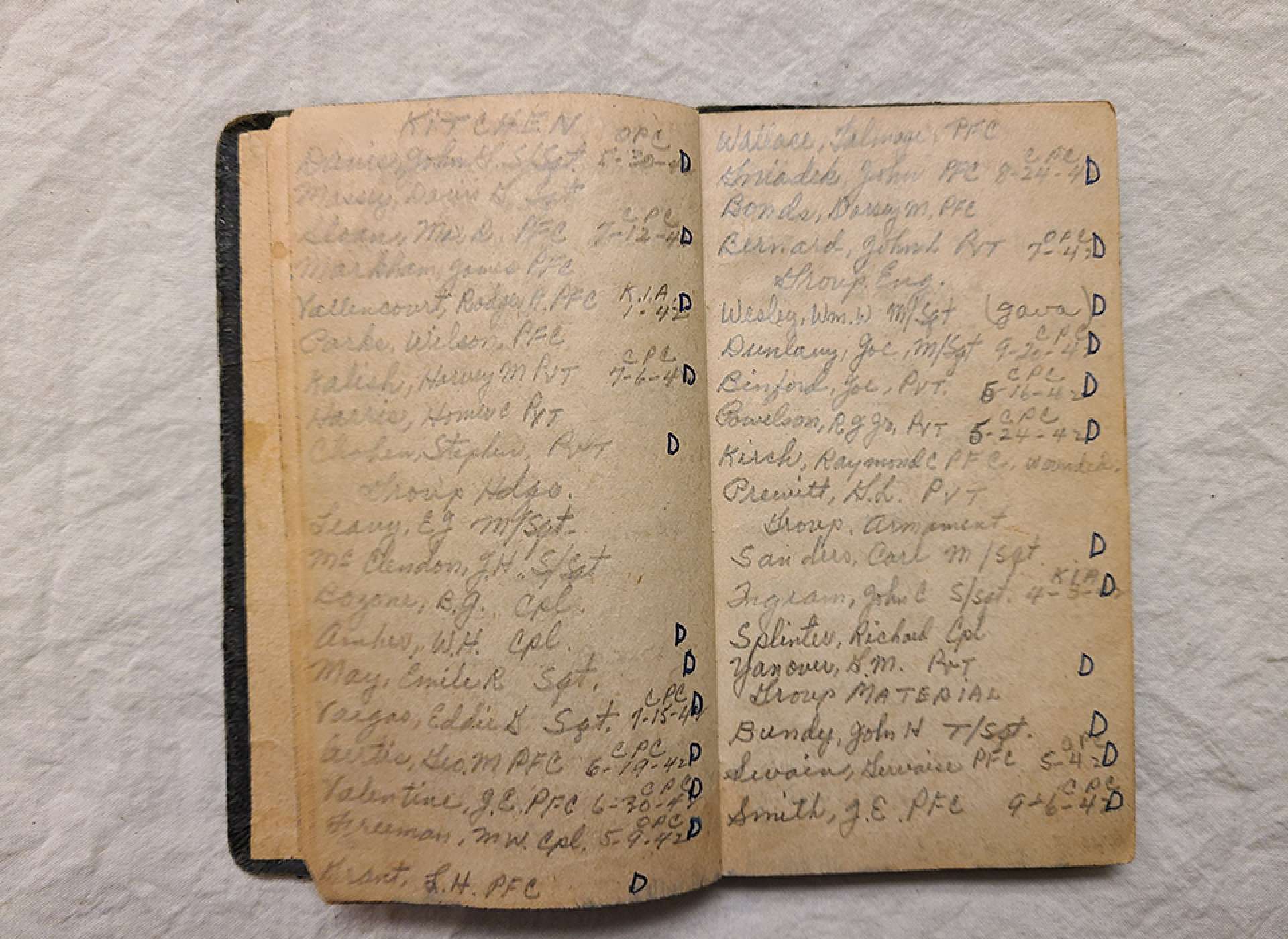Top Image: The cover of Charles D. Pages’ notebook, carried through the Philippines Campaign and his time as a POW. Gift In Memory of Charles D. Page, 2016.283.
A notebook rarely catches anyone’s eye. Notebooks of many forms exist all around us as ways to record dates, contacts, or to hold small bits of information as we go about our lives. The same is true for most notebooks in a museum collection. Many of the notebooks I have worked with were used to record very basic diaries, keep connections with fellow servicemembers, record training classes, keep checklists–certainly not the most “glamorous” of artifacts, but important ones for preserving the past. Whether it is exciting or boring, a notebook usually confines itself to a single person’s storyline. In this case, the notebook kept by Charles Don Page not only hints at his painful story, but carries the burden of over 200 men doomed to die or suffer years of captivity under the Imperial Japanese Army.
The first 11 pages of this particular notebook record the names of 211 men of the 27th Bombardment Group, Light. Written in pencil and neatly divided into the various sections that make up the ground support element of a bombardment group, each man is listed in his category—carpenters, kitchen staff, squadron headquarters, squadron operations, and shop helpers. Next to 120 of these names appears a heavy ink “D” near the edge of the page. Sometimes, written in light pencil the word “missing” or a scratched in date appears. Where there is enough room between the name and the edge of the page, “DEAD” stands in for the abbreviated D.
-

List of members of 27th Bombardment Group, Light, that served in the 2nd Battalion Provisional Infantry Regiment in the Philippines. The D listed next to the names indicate men that did not survive combat or their time as POWs. When there is room DEAD is written out fully. Gift In Memory of Charles D. Page, 2016.283.
-

List of member of the 27th Bombardment Group, Light, divided into men from the kitchen, group headquarters, and the shop. Of the 36 men listed on these two pages, 24 were killed or died as POWs. It is estimated that around half of the men from the 27th Bombardment Group, Light, that remained in the Philippines did not survive the war. Gift In Memory of Charles D. Page, 2016.283.
Before these men began their odyssey on what became known as the Bataan Death March, they had already gone through an unexpected transformation. From day one in the Philippine Islands they were flightless birds. The 27th Bombardment Group began arriving in November 1941, as part of the buildup in response to renewed Japanese aggression in the Pacific. The unit had transitioned in the United States from multi-engine light bombers to the A-24 Banshee, a dive bomber (more commonly known by its US Navy designation, the SBD Dauntless), becoming the first USAAF dive bombing outfit in the Pacific. The men traveled on a different ship, debarking almost two weeks before the anticipated arrival of their equipment. What they did not know was their aircraft would never make it. The ship carrying them was diverted to Australia when the Japanese attacked Pearl Harbor.
Pilots were a precious commodity when the United States entered the war. These highly trained men were essentially useless without aircraft, and too much had been invested to lose them in ground combat. When the Japanese invaded the Philippines in December 1941, the potential to lose pilots in ground combat became a reality. At the beginning of the campaign, the 27th Bomb Group attempted to get their planes to join the fight. Pilots flew some of the available aircraft to Australia to retrieve their dive bombers only to be told they could not return. The rest were slowly evacuated by aircraft or submarine as the tide turned against US and Philippine forces. Left behind were hundreds of men organized to support aircraft—with no aircraft to support. This marked their final transition of the campaign. They were the first USAAF unit to convert to an organized infantry force, becoming the 2nd Battalion Provisional Infantry Regiment (Air Force).
The 2nd Battalion Provisional Infantry Regiment stayed in a reserve role for the first few weeks of the fighting in the Philippines. Even before entering combat as a regular unit, just existing was difficult. Due to the rapid Japanese advance, and a few questionable command decisions at the highest ranks, supplies and time were low. Men were expected to work and fight, all on half rations. By the time the former 27th Bombardment Group became a fixture on the front lines, their food ration was further reduced. Despite this the tired, malnourished Air Force men (called the Air Corps until March 1942) fought for over three months until the unit surrendered on the battered Bataan Peninsula in early April 1942. This marked the end of their time as infantry and the beginning of the real suffering. Among the first US units to be captured—essentially at the beginning of the war—their path would be marked by the infamous mileposts of Cabanatuan, Bataan Death March, Hell ships, Manchuria… and the fates of 211 of these men were recorded in the small pages of a notebook kept by Charles D. Page.
The method behind Page’s notebook recordings is unknown. Born in 1913 in Florida, Page enlisted in the US Army Air Corps in October 1940. Even after the ordeal he went through in the Philippines, he remained in the US Air Force until 1965, eventually passing in 1987. The list Page made is not representative of the entire regiment. Over 800 men were formed into the 2nd Battalion Provisional Infantry Regiment and fought for months. Because he only listed 211 men, it is likely that this was a smaller unit within the regiment that he served in. At the time, Page was older than most men in uniform and was a Staff Sergeant with group headquarters. It makes sense that he would have kept an account of the men. It is also an evolving document. The dark pen marks indicating who died are often written over pencil notes of who was missing or killed in action. The note of killed in action is further revealing because it indicates they were killed before the unit surrendered. The rest of the notebook is full of nicknames, a few recipes, contact information for families, and a brief list of his journey from Bataan to Manchuria. Any more guesses about what he was thinking or when he wrote this information down are just that, guesses. What is true is the story these names tell, the ones who were lucky enough to survive, and the ones who never made it home.

Curator's Choice: Nuremberg Trial Visitor
The courtroom of the International Military Tribunal in Nuremberg hosted nearly 400 visitors each day, including 250 members of the international press. The Museum’s collection contains items from some of these visitors, American service members who wanted to sit in on one of the most significant trials in history.
Joshua Schick
Cite this article:
MLA Citation:
APA Citation:
Chicago Style Citation:











